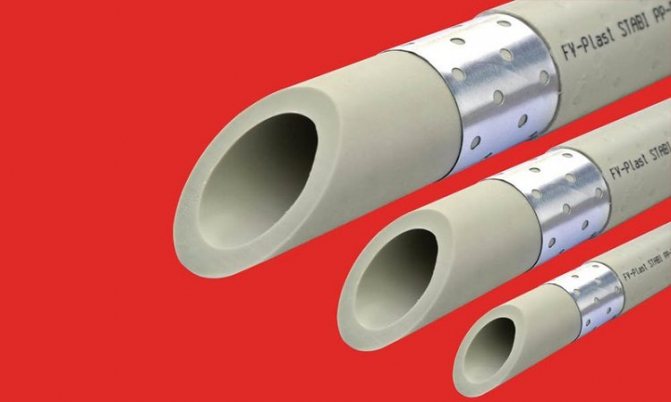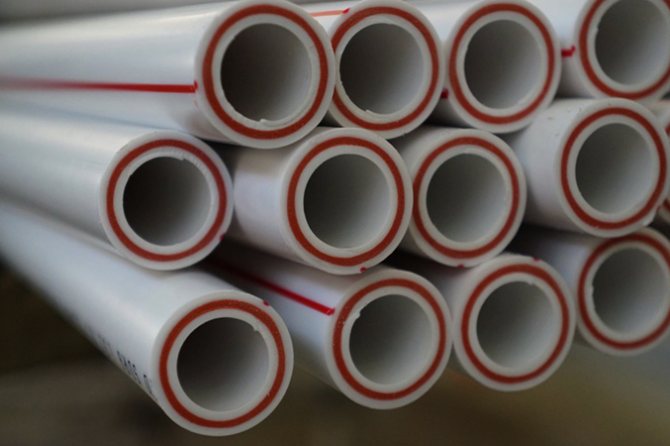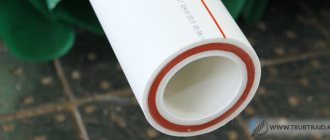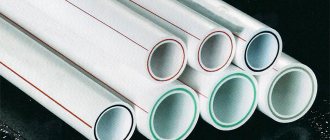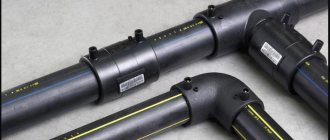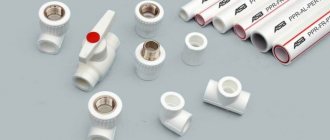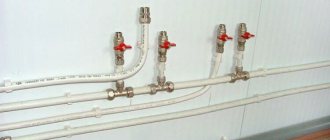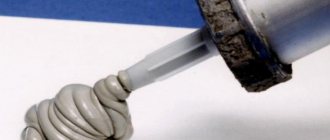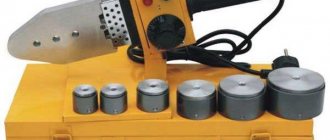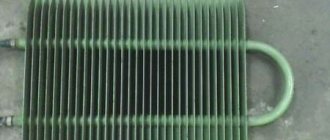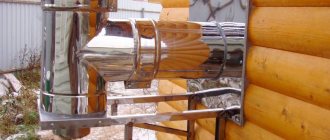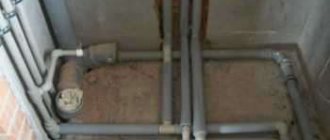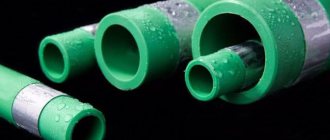What is polypropylene?
Polypropylene is a material that, by its very nature, undergoes significant elongation and expansion during heating.
Example:
The hot water supply system, 10 m long, is mounted at a temperature of 200C, and water with a temperature of 1000C will pass through the pipe. With such a temperature difference, each meter of the pipe can lengthen by 12 mm, respectively, with a pipe length of 10 m, the pipe will stretch by 12 cm.
That is why, during the design and installation of heating or hot water supply systems, this property of polypropylene cannot be ignored for a number of reasons:
- a straight pipe will go in ugly waves. Especially if there is a long section;
- If the pipes are hidden in the wall, then there is a high probability of violation of the decorative coatings on the wall.
Reinforcement of polypropylene pipes is done just in order to reduce linear expansion during heating. In this case, something like a rigid frame is formed, which prevents the pipe from lengthening. In this case, the reinforced pipe does not become stronger, the frame only serves to reduce the linear elongation. Should you choose this kind of polypropylene? We read further about the types of reinforcement.
disadvantages
With aluminum reinforcement, everything is clear: it needs to be peeled off, and it can peel off. And what about a glass fiber reinforced polypropylene pipe? Is she literally manna from heaven?
In general, yes. The disadvantages of fiberglass-reinforced polypropylene pipes seem to be mostly far-fetched. These include the fact that the pipe allows atmospheric oxygen to saturate the coolant, which, they say, causes accelerated corrosion of the metal of the boilers. However, none of the critics have provided convincing figures.
Aluminum on the outside of the pipe
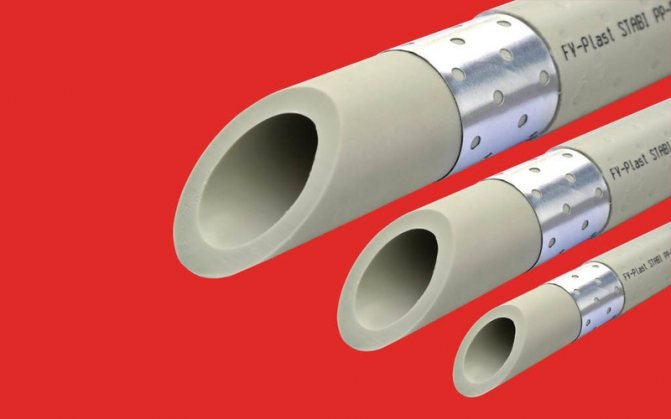
Aluminum reinforced pipe
The aluminum layer does not impart strength to the pipe, since, unlike metal-plastic pipes, aluminum foil with a thickness of 0.1 to 0.5 mm is used for reinforcing polypropylene. But at the same time it perfectly solves the problem of linear elongation. As mentioned above, if, without reinforcement, 1 m of a polypropylene pipe lengthens by almost 12 mm when heated, then under the same conditions, when reinforced with aluminum from the outside, the pipe will change its length by only 2 mm.
Aluminum foil with polypropylene is bonded with a special glue. Reinforcement with aluminum from the outside occurs in the following sequence:
Polypropylene pipe - adhesive layer - aluminum foil - adhesive layer - polypropylene layer.
The quality of the adhesive joint and of the polypropylene itself affects the durability and service life of such a pipe.
Advantages of external reinforcement with aluminum:
- The linear elongation of the polypropylene pipe is significantly reduced.
Disadvantages of external reinforcement with aluminum:
- Over time, bulges may form in some sections of the pipe.
Outwardly, it seems that the pipe will soon burst, but in reality it is not. Only the outer thin layer of polypropylene, which covers the aluminum foil, is blown up.
Manufacturers of polypropylene pipes allow such bulges, since this does not affect the strength of the pipe itself. The main thick layer of polypropylene remains intact. Bulges can form due to residual moisture during production. You should not be afraid of this drawback, the system will continue to work properly and further in spite of its unpresentable appearance.
- The outer layer must be stripped before welding as the outer diameter of the aluminum-reinforced polypropylene pipe is larger than usual.
Advantages of polypropylene for heating systems
When choosing pipes, it should be borne in mind that material properties are optimized due to the multilayer structure of the products. Thanks to it, the polymer acquires the ability to withstand high temperatures, while not expanding linearly, in contrast to unreinforced types of pipelines made of this material. The advantages of polypropylene include:
- ease of installation,
- low weight of system elements, which greatly simplifies transportation and installation,
- environmental safety,
- lack of vibration and noise during operation,
- minimum hydraulic losses,
- resistance to the formation of mineral deposits on the inner surface,
- insulating properties that allow pipes not to conduct stray currents,
- durability (50 and more years),
- higher strength of welded joints (in comparison with collet),
- efficiency (due to reduced heat loss),
- immunity to mechanical stress,
- chemical resistance,
- affordable price.
The aesthetically pleasing polypropylene tubes do not require painting.
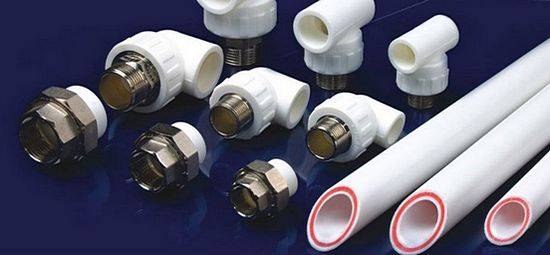

Reinforced polypropylene pipes and fittings
Aluminum on the inside of the pipe
This method of reinforcing a polypropylene pipe is one of the solutions to eliminate external blisters. Although there is still a potential risk of puffing up with this method, the only difference is that it will not be visible to the user. With such small swells, the system will continue to work.
Advantages of inner reinforcement with aluminum:
- The polypropylene layer between the reinforcements is quite large and it is much more difficult for it to swell.
Disadvantages of reinforcement with aluminum on the inside:
- Possible collapse of the weak sections of the polypropylene pipe inward if you make a mistake during the design or operation of the system. which will entail a malfunction and possibly the integrity of the system.
Appearance
You can reliably find out if the pipe has reinforcement and, if so, what type, by looking at its cut. Polypropylene pipes reinforced with aluminum have a thin layer with a metallic sheen (we, of course, are talking about internal reinforcement. External reinforcement leaves no doubt).
Fiberglass-reinforced polypropylene pipes are distinguished by the presence of three layers of approximately the same thickness, of which the middle one is brightly colored. The color does not say anything about the characteristics of the pipe. The manufacturer chooses it solely based on its sense of beauty.

